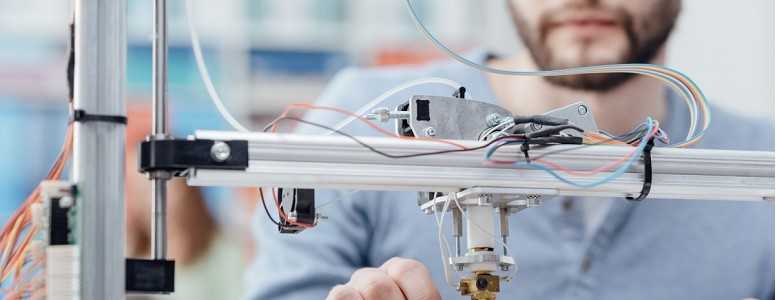Pioneering flexible biosensors that monitor blood glucose levels have been successfully printed by a 3D printer for the first time in the US.
The sensors have been designed to fit inside a wearable monitor, so the user can monitor their blood glucose levels without having to rely on finger-pricking.
The challenge with biosensors is producing them into a flexible format, which up until now was limited to screen-printing, a cumbersome and toxic procedure.
To overcome the issue, a team from Washington State University produced an electrically conductive and flexible material for the sensors, which have proven to be effective and could help ensure the technology is made more accessible for people with diabetes in the near future.
Arda Gozen from the faculty in the School of Mechanical and Materials Engineering, who led the project, said: “3D printing can enable manufacturing of biosensors tailored specifically to individual patients. This can potentially bring down the cost.”
The technology works by measuring glucose levels in the person’s sweat. The team believes this device will completely transform the way people monitor their diabetes in the future as it makes life a lot easier.
Yuehe Li, who was also involved in the work, added: “Our 3D printed glucose sensor will be used as a wearable sensor for replacing painful finger pricking. Since this is a non-invasive, needleless technique for glucose monitoring, it will be easier for children’s glucose monitoring.”
Now the team are turning their attention to integrating the biosensor into a device which can be worn on a long-term basis. At the moment their current idea involves a wrist strap that can connect wirelessly to a smartphone so the user can access their glucose levels.
The research team thinks future designs may also include combining other technologies, such as activity trackers, into a wearable piece of clothing, like a shirt.
The findings have been published in the journal Analytica Chimica Acta.
What's new on the forum? ⭐️
Get our free newsletters
Stay up to date with the latest news, research and breakthroughs.




